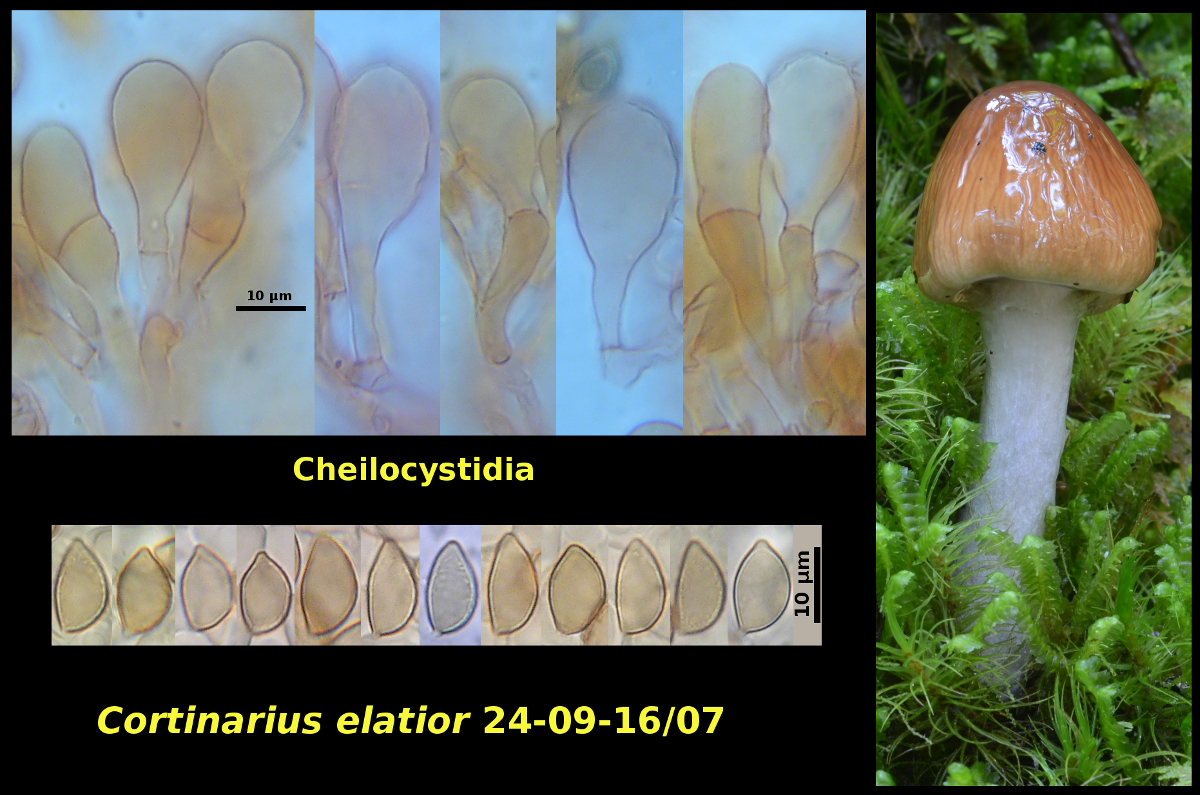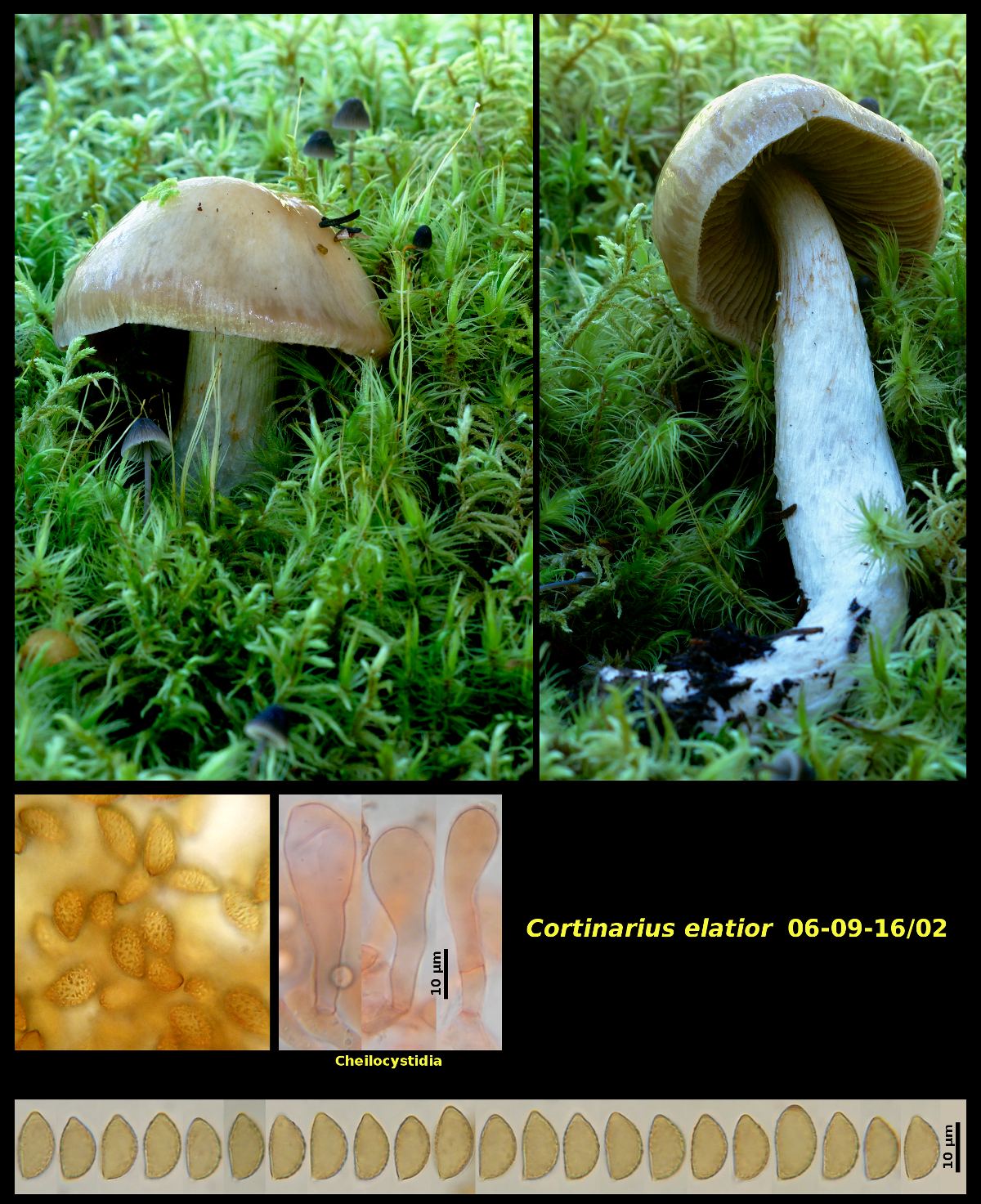Fleshy Fungi of New Brunswick >>
Cortinarius elatior
Cortinarius elatior Fr.


Two collections:
1. Growing in deep Pleurozium/Dicranum carpet in forest dominated by Abies balsamea and Betula cordifolia, Campobello Island, New Brunswick (24-09-16/07).
Pileus conical, radially corrugated, yellow brown (HSV45:70:80-100), extremely viscid, glabrous, 30 mm in diameter. Stipe equal down to the tapered base, white on the upper half, yellow brown (HSV50:40-60:90) below where the what material has disappeared or been rubbed off, strongly viscid, 130 X 7 mm. Lamellae tan (HSV50:40:90), close, adnexed, with a weakly serrated white margin. Cortina white. Flesh concolorous with the surface tissues in the cortex of the stipe and immediately below the pileipellis, white to pale yellow brown elsewhere, lacking a distinctive odour and taste (not bitter) except the base of the stipe which has a honey-like odour.
Basidiospores limoniform, 10.8-13.1 X 6.3-7.3 μm, Q = 1.57-2.00 (average[12]: 12.1 x 6.8 μm, Q = 1.78). cheilocystidia 19-42 x 11-16 μm. Clamp connections lacking.
2. Solitary in deep Pleurozium/Dicranum carpet under Abies balsamea, deeply embedded in the moss so only the pileus is visible – McPherson Point Protected Natural Area, New Brunswick (06-10-16/02).
Pileus conic-convex, obscurely corrugated at the margin, viscid, glabrous, pale orange yellow (HSV45:10-15:90-100), with a darker greyish orange brown (HSV35:30:60-70) area at the margin (perhaps the only unfaded part of a hygrophanous surface?), 60 mm in diameter. Stipe equal, white, finely rugulose below the cortinal zone, smooth above, glabrous, viscid, 135 X 16 mm. Lamellae light greyish orange brown (HSV30:30:70), close, with a finely serrulate margin, adnate, not marginate. Cortina present only as a few traces on the upper part of the stipe, not assignable to colour. Flesh pale yellowish white, with a nondescript mushroom odour, tasteless (not bitter).
Basidiospores limoniform, 12.0-14.8 X 6.7-8.2 μm, Q = 1.71-1.90 (average[22]: 13.0 x 7.2 μm, Q = 1.81). cheilocystidia 37-42 x 11-15 μm. Hyphae without clamp connections.
Recognized by its conical and corrugated pileus, large broad basidiospores with Q-value less than 2.0 and by its lack of clamp connections. Both collections presented here were growing in perhumid coastal maritime forest and were deeply embedded in moss carpets. A third collection (26-09-08/01) was found in a dense Sphagnum carpet in similar coastal forest near Little lepreau, New Brunswick but has not yet been studied closely. All were found in late September or early October. Cortinarius mucifluus, with a less conical and uncorrugated pileus, but also lacking clamp connections, can occur among mosses, but in dryer, less oceanic habitats. Cortinarius collinitus is similar but differs in having a more rounded and less conical pileus with a smooth appearance, slightly broader basidiospores and in having clamp connections on most septa.
Photograph: D. Malloch (24-09-16/07, 06-10-16/02).